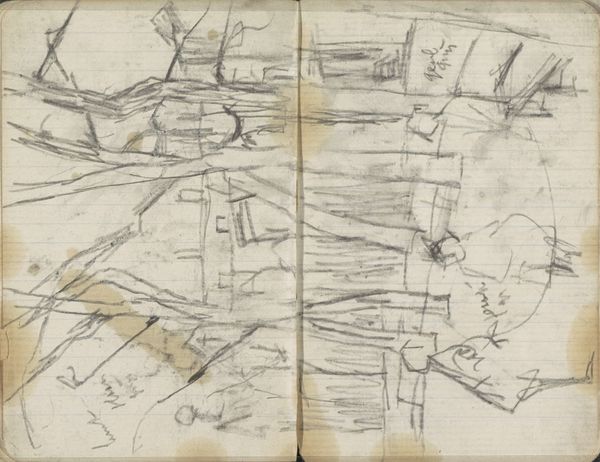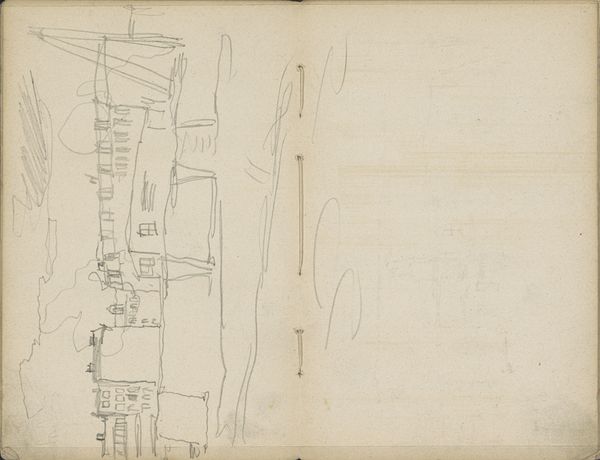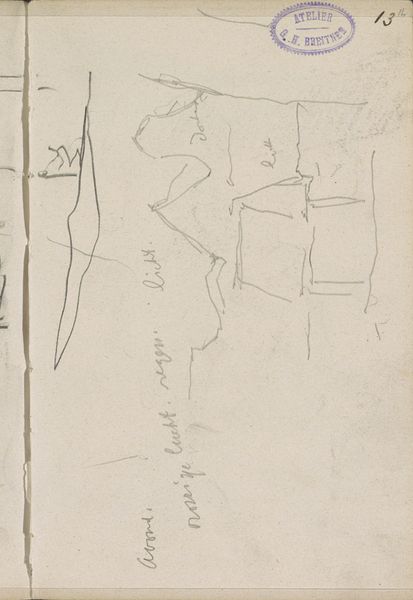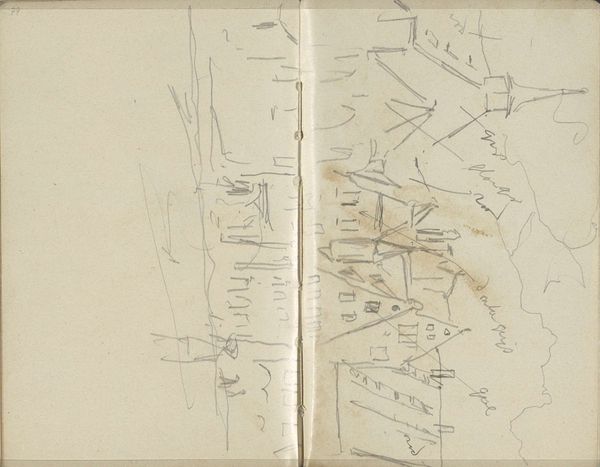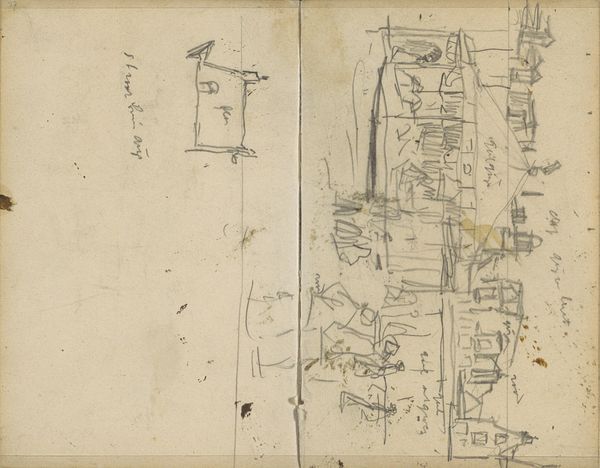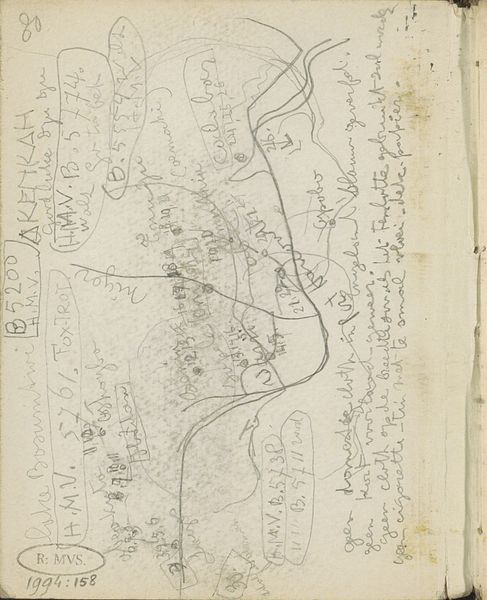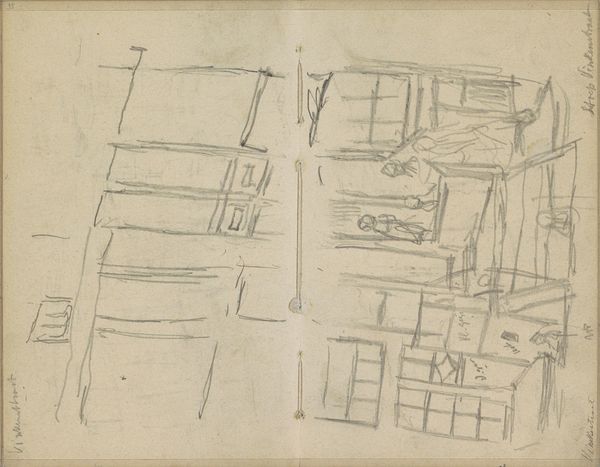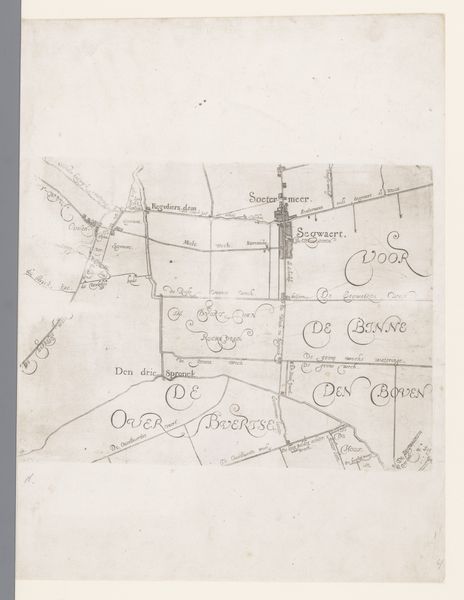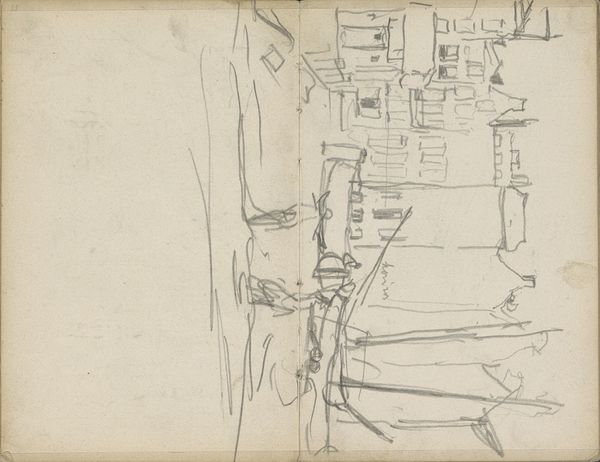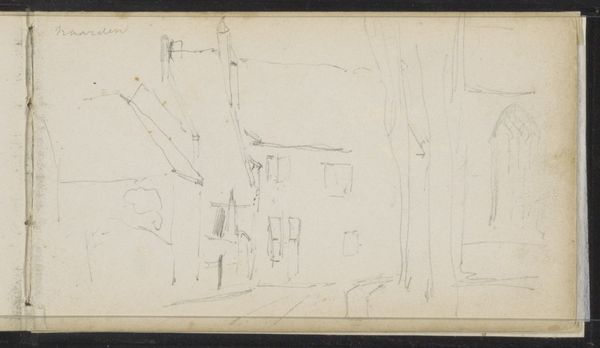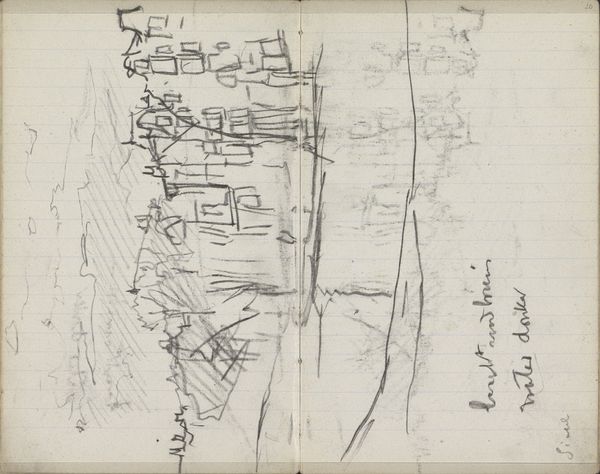
Gezicht op gebouwen in Amsterdam, mogelijk in de Reestraat 1893
0:00
0:00
#
aged paper
#
toned paper
#
sketch book
#
hand drawn type
#
personal sketchbook
#
ink colored
#
sketchbook drawing
#
watercolour illustration
#
sketchbook art
#
street
#
watercolor
Copyright: Rijks Museum: Open Domain
Editor: Here we have "View of Buildings in Amsterdam, possibly in the Reestraat," a sketch by George Hendrik Breitner from 1893. It's a light pencil and watercolour on toned paper, taken from a sketchbook. The composition is almost ghostly in its incompleteness. What can you tell me about it? Curator: Breitner's sketch offers a fascinating glimpse into the social and artistic landscape of Amsterdam in the late 19th century. Think about the rise of urbanism and photography. How did these rapid changes shape an artist’s perception and representation of the city? Editor: That's a great point, it's a bit like a snapshot but translated onto the page. Curator: Exactly. This sketch isn't just a rendering of buildings; it reflects a modern consciousness grappling with a changing environment. Notice the quick, almost journalistic style. How does this aesthetic align with the burgeoning realist movement of the time, and how did the art institutions of the time receive this type of informal art? Editor: Well, there’s definitely an element of reportage that connects with a social commentary, and yet… It's such a personal, intimate viewpoint from within a sketchbook, I wonder if that's the key? Perhaps not originally intended for display. Curator: Precisely! The public role of art was under debate. Breitner and his contemporaries questioned traditional academic standards. The loose lines, the unfinished quality—these were conscious choices, pushing against the established art world's expectations of polished, finished pieces. It invites the viewer to participate in constructing the image, a very modern concept. How do you think the intended, or perhaps unintended audience at the time viewed that, in light of all the more “complete” academic paintings? Editor: It gives me a different appreciation for the piece knowing it invites participation instead of just observation! Curator: Indeed. By examining its social and historical context, we can grasp how Breitner challenged and redefined artistic conventions. Editor: Thanks, that was insightful. I feel I have a more complex understanding now.
Comments
No comments
Be the first to comment and join the conversation on the ultimate creative platform.
